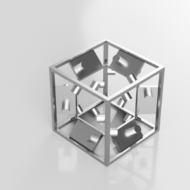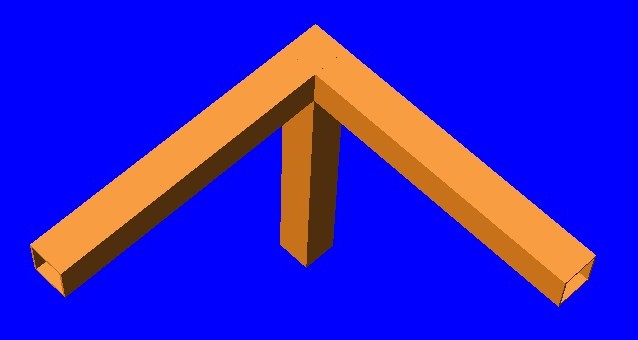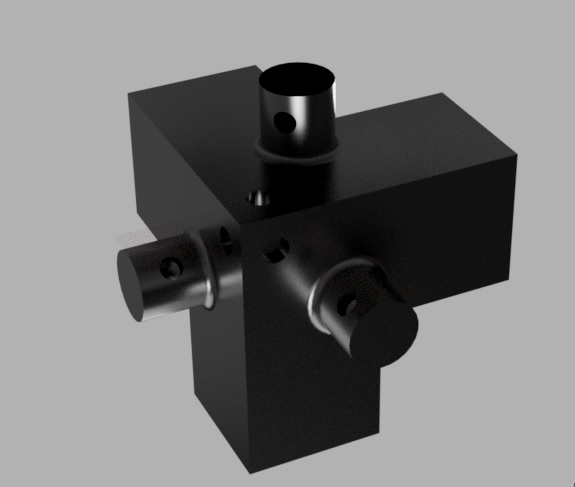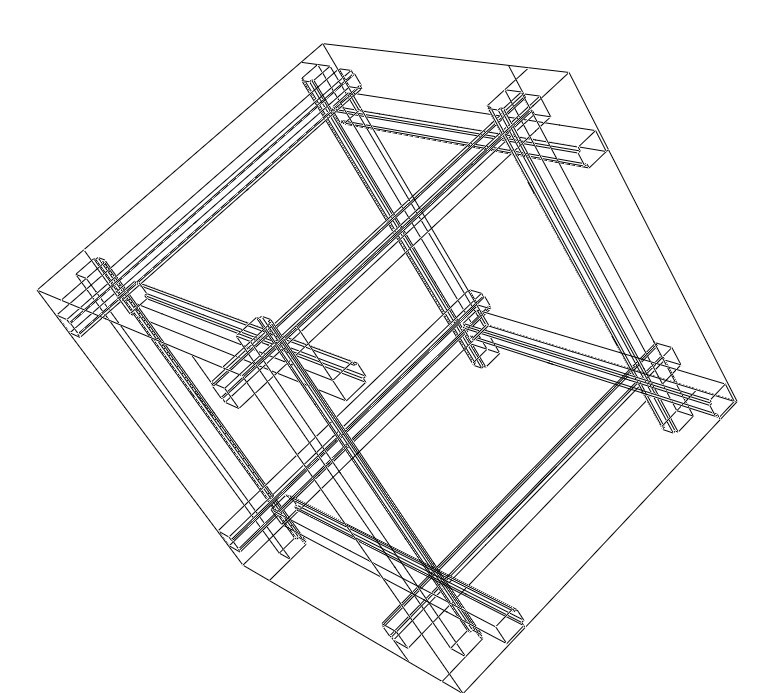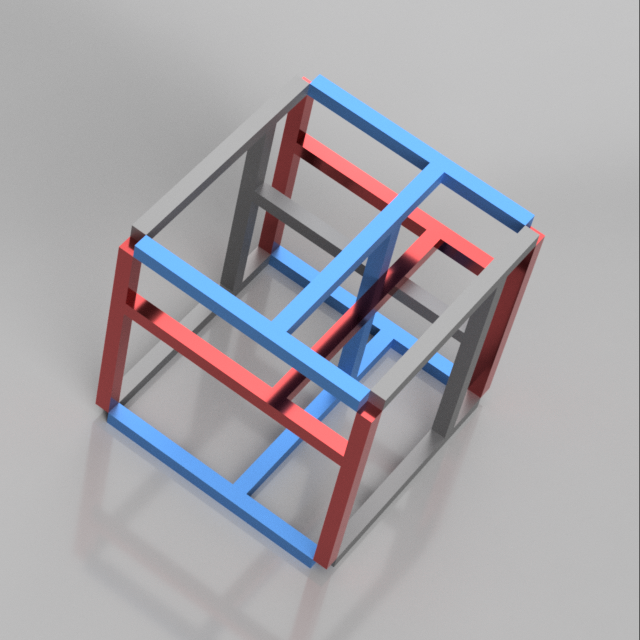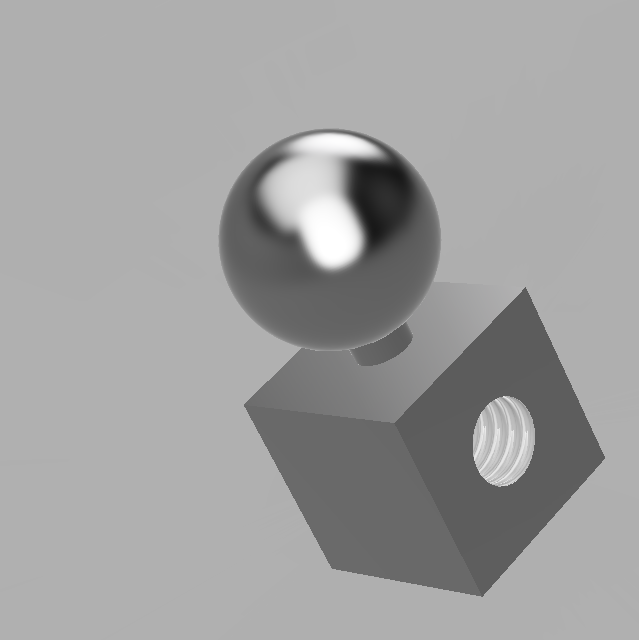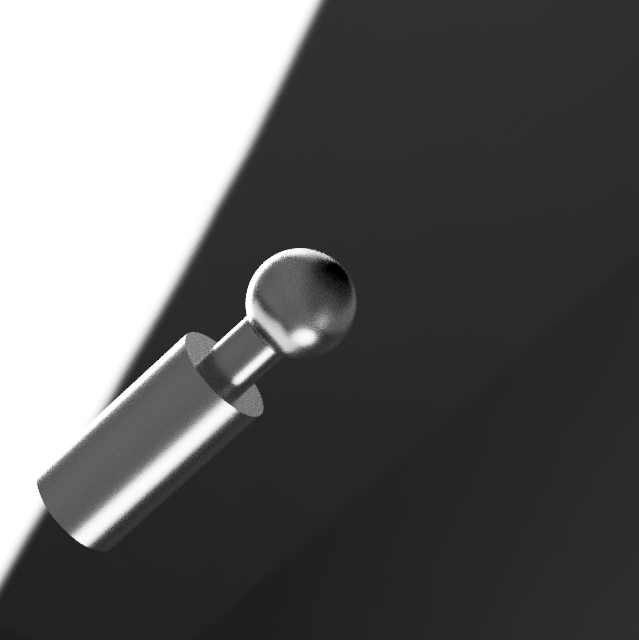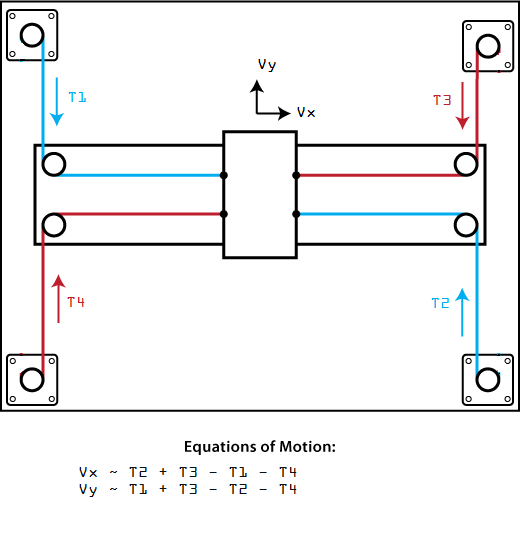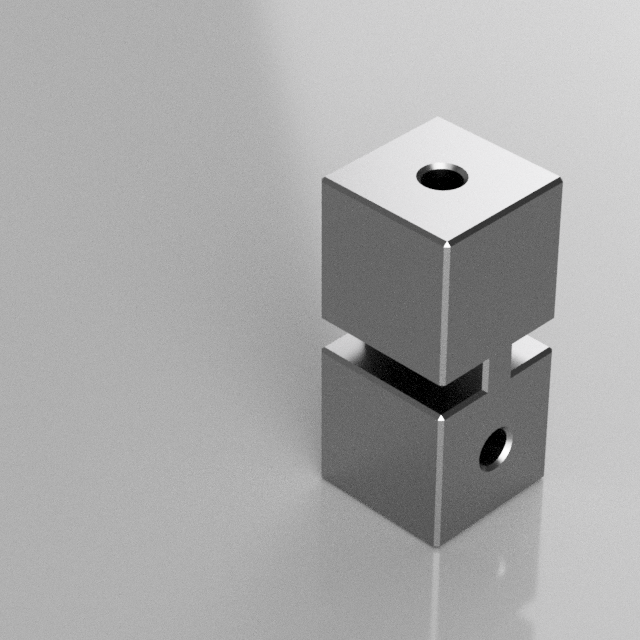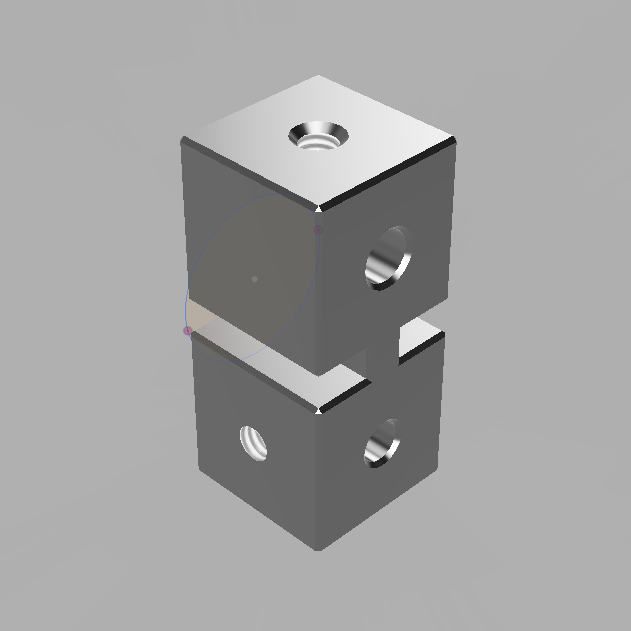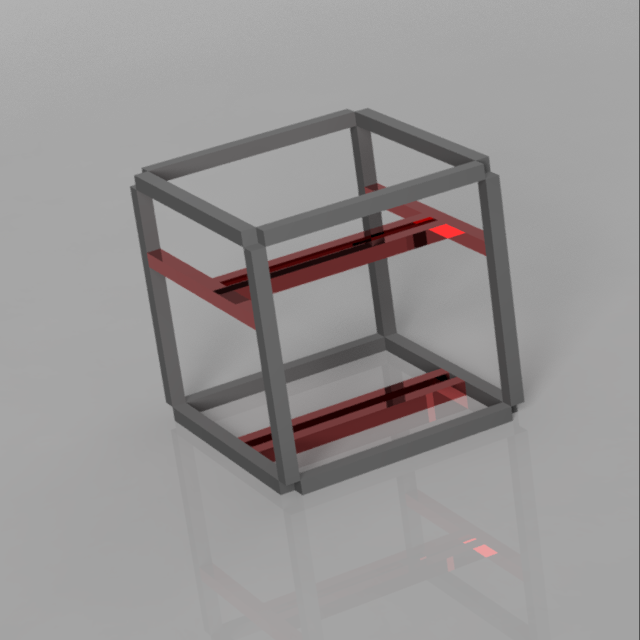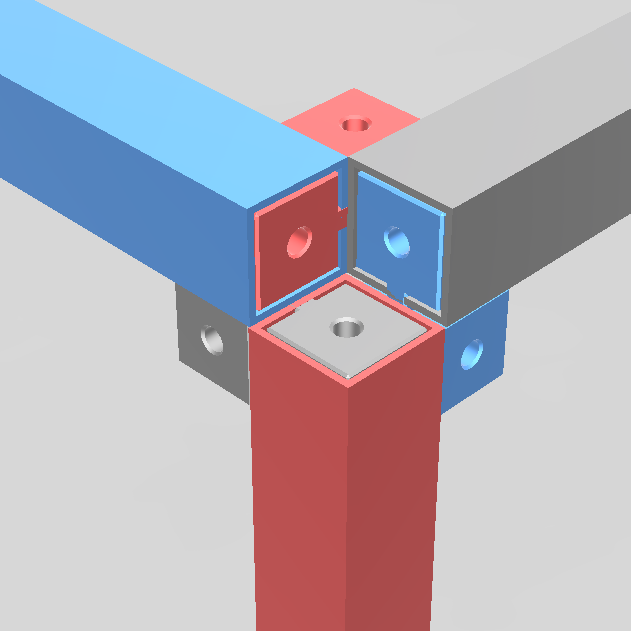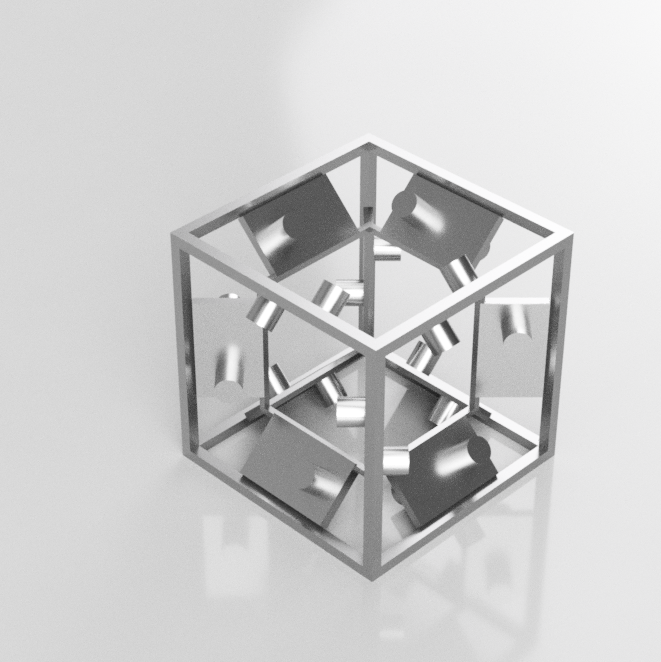Bateson
Release status: Concept
| Description | Reproduction Geometry Concept
|
| License | |
| Author | |
| Contributors | |
| Based-on | |
| Categories | Concept
|
| CAD Models | |
| External Link |
Page started by DGoncz 20170805 after a creative winter and particularly July and some hospital time.
The Bateson Family of Machines
Bateson is cyclic: Each Machine makes a Feature of a Part of a Machine Under CNC Post Operator Setup and There are Essential Parts Purchased and Essential Features Completed by the Operator
We don't call them vitamin parts any more. Sorry. There have to be vitamins and minerals and more. It gets complicated.
Firstly, Bateson is a RepStrap design concept and at this writing no Bateson has been built. Also, Bateson is a concept for how to build, not what to build so there may be many bootstrapped Batesons which may replicate to varying degrees of success. Bateson is designed, unlike all other RepRaps to my knowledge, to array densely such that each Bateson supports the others. So it's a cube, or rather, the Bateson concept includes a design rule: a Bateson should fill allspace when arrayed.
Secondarily, all the axes in a most Batesons are not indistiguishible but are functionally identical. Pairs of secondary struts join pairs of primary axes and a tertiary strut joins those secondary struts, reducing the input of as many as 24 motors in 12 primary cube defining struts on 3 perpendicular sets of 4 parallel axes moving synchronously along the 4 parallel axes to motion in 6 face-bound secondary struts on 3 perpendicular sets of 2 parallel axes moving synchronously along the sets of 4 parallel axes and normal to the 2 parallel axes to 3 position defining interior tertiary struts moving normally to the sets of 2 parallel axes. The 3 tertiary struts either cross at a folllower block to which is mounted effectors oF any type or a bed holding a part being composed, or interesting in a follower block of 6-symmetric hex cruciform. Nonintersecting tertiary struts limit the work envelope to X < Y-t < Z-2t, and telescoping strust are actually most suited to zero G, although on the diagonal, the forces may balance. The construction is symmetric. The tertiary struts are not shown in the logo picture nor is the follower block.
Leadscrews can drive a heavy bed, which would not be very fast. An advantage for that option is the Bowden tube wouldn't move. For a direct welding machine with MIG technology, FFF Metal to Metal, this might be a significant advantage. Also, for the floppier, hard to drive filaments, the Bowden tube not moving might be an advantage in that the reliability of the filament drive might be increased. There are conceivable uses for an inverted bed, also, topsy-turvy, if bed adhesion is high, because some infill specifications require in-free-space infill and heaping melted plastic on itself doesn't really work all that well; if you want to draw an octet truss inside your part, you would do that from below.
Thirdly, a Bateson hangs on a diagonal or sits braced within an octet truss, allowing, if desired, threaded rod leadscrews to be used, subject to yet another design rule: accelerationss are below 0.707 G to avoid backlash; all the parts are biased downwards by gravity, but it's oriented diagonally; it isn't a squat cube. The symmetry is taken to the extreme.
A fitment opposite the hangpoint supports various worktables for 3D printing or a lathe tailstock and die chasing head that allows sturdy Batesons to make their own leadscrews. The platform defines the work envelope by blocking certain positions of travel of the tertiary struts. If it's a small platform, printed work can grow long. It it's thick and inverse conical, it can support a larger piece with a flat round base. It can be half the height of the Bateson and as wide as a diagonal for self-reproducing the axes across the main diagonal or support work that would probably warp, replicating along the main diagonal.
The Bateson concept includes a an auxiliary foundry and a head for extruding its own machinable wax stock which can be contained in a Rubik.
See Wolfram and other sources for the Prince Rupert problem of the largest square that fits through a cube. It's larger than the side of the cube, making Bateson a RepRep that can, ignoring its own infrastructure, print parts larger than itself, and build a larger Bateson, not just from joining pieces, but from frame parts. This figure of 115% needs some study.
There is no name for a Prince problem of the largest line that fits through a cube; it's trivial. The diagonal is about 1.7, the cube root of three. Bateson can, once again ignoring its own infrastructure, double its size in two generations (1.7^2>2) by arranging a bed not normal to the hanging axis, but from a lower corner to an upper corner.
An array of 3 x 3 x 3 Batesons is a Rubik. Such a Rubik would strengthen and support the central Bateson and would, like just one Bateson, be amenable to being surrounded by an octet truss to further strengthen the array at low mass cost. Post such rigidification, a Rubik's central Bateson will be fitted with an effector ballast attachment allowing heat for the melt effector to be taken from a surround of water and from motors for milling. The water would turn to ice supplying needed ballast for milling to resist vibration. 27 Batesons with 4 axes each fit into the 127 node USB design space including a boot drive for the machine.
An array of 5 x 5 x 5 Batesons is a Kubik and is notable in that there are fewer blocks needing extension by octet truss than there are in use as joiners between cube legs, and this is true as scale grows to 6 x 6 x 6 and beyond.
Bateson arrays to billions; cubes fill allspace as mentioned.
One Bateson with octet truss is an octagon and can sit on a desk. It can be small or large. The larger a Bateson is the more it looks like a cube; the octet truss conforms to the cube surface.
A cubical Bateson can be small, large, or huge. An ironwork frame building can be made up with a Bateson in each room of a pyramidal building.
DGoncz has contacted America Makes about Bateson.
DGoncz is building a model Bateson of 21 pieces 3/4 inch OS aluminum tubing, 5/8 inch IS, roughly 12 inches long, with analog drive, and may or may not inbuild potentiometers from resistive sheeting. The first try will probably use stall for endstop with no sensors and coordinated motion of all 3 axes. It will probably use 14 gage bicycle spoke wire, taxidermy wire, in pairs of tension members, to conduct the power and hold together, inside the tubing. It will probably be seen onstage somewhere as a prop one day because it will not do much. It will probably use magnets inside the tubing to transmit the motion. It will be hand fitted just to prove that there can be a symmetric Cartesian machine. You might want to base your Bateson on 2 inch OS aluminum tubing inside IS 1.75 inch fitting the very popular NEMA 17 frame stepper, 1.7 inches square faced. You'll want to slot the tubing and arrange positive drives, not use magnets.
A Basteson can be built with care and concern, a bit at a time, by assembling RepStrap style a single axis, and instructing it to facilitate the manufacture of 3 more, assembling them in a pyramid, a cube corner, with non-Bateson supports, to form a plotter or printer with limited capacity. That concept is called Stix.
Adding 6 more Batesons to form an unfinished cube adds some capacity. Adding three further to complete the 12 axis cube completes the capacity. Multiplying by 4 (repeat 3) adds some rigidity, but 27 offers a central position rigidified greatly by Batesons on every possible face: a Rubik. This can be configured to 3D print machinable wax, to bend, rivet, and otherwise form the wax in mass-neutral processes requiring large forces in the central stiffened cube, to mill and turn the wax, tap and drill it, to thread mill it, for assembling in left-hand / right-hand pairs that mate to simultaneously tighten opposing faces of joining parts with a given torque and orientation, and these wax parts can be cast, formed, subtractively finished, and used to form Batesons, Rubiks, Kubiks and more, as well as in applications requiring superalloy parts like turbogenerators.
Once a Kubic has been used to reproduced 27 Batesons, it can be disassembled into 27 more Batesona.
That's an important point; we do not have here 27^x, a new basis for the exponent of a deployed population of machines, but we do have a 27 * 2^x, a useful development. In one generation, x=0, 2^0=1, there is (was) one Rubik, but disassembled, there are 27 Batesons, which would have taken 5 generations 2^5=32>27, to generate, and we find, or I observe, and I may not be correct, that with revisions, most RepRaps do not generate 5 times without serious revision.
So this is a concept of geometry relating to machine reproduction we as RepRappers can use.
Any RepRap that arrays to fill allspace, co-suppporting the others in the array, lending stiffness most to the inner machine(s) in the array, is subject to development in multiples advantaged by this assembly/array/disassembly protocol. Bateson, being a design taking symmetry to an extreme, is well suited to this advantage, as it incorporates an additional factor of 12 times the 27, since all 12 axes are identical.
There are more than three possibilities for orientation of a cube--three relevant orientations are: a short "diagonal" (face to face) can be vertical, and so the others become horizontal; a long diagonal can be vertical; or, long sought and relevant to replication, two long diagonals can be horizontal: this allows printing parts large relative to the cube size.
A Bateson can be externally trussed in layers of octet truss to any needed degree of rigidity but only the selection of prehardened drill rod for the tertiary rods and careful control of their length controls the critical stiffness there. The addition of mass to the follower block with ballst blocks or by water pumped in an frozen, and melted and pumped out when not needed, can ameliorate some of the vibration concerns associated with contour milling. The success of applying that process to this highly parallelized motion control frame is not known.
The end connectors would look something like this:
Another way of setting it up is this:
Nonintersecting tertiary struts are shown in this rendering:
Bateson is the macromaterilistic rebuttal to the nanomaterialistic quest for matter that does our bidding; as every apprentice knows, we already have such matter.
A parallel Cartesian framework is impossible if the first applied constraint is bearing on rod. This contrains one linear out of 6 total DoF. See DriveTrains#binding . Bateson redunandantly constrains 4 bearings in rods synchronizing their positions defining non rotating reference frames. Truth told, and I'm not a DoF engineering, you'd only need 3, Delta style, synchronized, so it's over constrained, but synchronized. To continue, in each tube would be a block magnet, say North out. It wouldn't matter, the polarity, because in the end of each secondary strut would be a ferromagnetic ball, *not* a magnetized ball, and that ball would roll on the surface of the primary strut, constraining the axial locations, synchronized, of the secondary strut, not their rotation about that axis. Within the secondary tube...another magnet, North out by convention, and in the end of the tertiary strut, a ferromagnetic ball rolling on the surface of the secondary strut, again unconstrained about its length. Within the tertiary strut... yawn...one more magnet, North Out, combining with the others to align the faces of the tertiary struts. A little clearance at the ends of the tertiary struts, and they constrain the irrelevant rotations of the secondary struts. A little clearance there, and they move freely between the primaries. I believe I have divided the DoF evenly. Cubes are available that loosely fit brass tubes, and would be attracted to the balls. Balls are available that would fit reamed holes in the ends of such brass tubes very precisely. And the tube length can have substantial clearance, and ultimately, way down line, the tubes can be printed by a Bateson because for an inside edge length of L and thickness T, the travel is sqrt(3)*L - 3*T > L for most proportionate T and L. Magnets here are analogies for block and pin and ball joints that would move in slotted tubes with leadscrews in a more conventional setup.
The above is a 1 to 4 DoF joint. Riding on a rod, it's 2 to 4. Driven by a leadscrew in a square tube as intended, slotted, engaging a square tube, 1 to 4.
The above is a 4 to 2 DoF joint. The file's mislabeled for Bateson. Driven at the ball in a slotted tube, engaging a tube, 4 to 2. I think that's right.
I hope I can learn enough about DoF to analyze this thing.
The CoreXY drive can be expanded. Strings can be embedded insided a square tube cubical frame allowing positive drive of Bateson's primary, secondary, and even tertiary struts, all of which are identical. Without pulleys, there would be rapid wear. Four motors per face would redundantly control X, Y, and Z by controllling string inputs A, B, and C, leaving a fourth position for Tension T. Or three motors per corner would control cable inputs that dog-leg to affect X,Y, and Z and would synchronize with a T term adding tension at all 24 (! good grief but it reduces the number of problems to be solved) motors.
A tension based CoreXY looks like this:
A tension based CoreXY drive will only hold still when T1=T2=T3=T4 but since the moving masses are different frequency division multiplexing can be used to drive one axis with a bias sine wave at its resonant frequency, leaving the other locked by friction, when single axis moves are desired.
A tension based CoreXYZ drive would have moving masses that differ also, again making frequency division multiplexing of friction reducing bias signals possible. So would the illustrated CoreXYZXYT drive. With differing head and table masses it is unlikely but possible there would be a duplicate.
A Core XXYZT block would look like this:
21 Core XYZ blocks would be required for a tangent tube Bateson.
Refeaturing that block to make use of TriBolt joints makes for 43 count blocks plus motor mounts. Spooling a double length of cable on adequately sized winch drums would allow for critical inspection, and replacement of cable by splicing *before* a break makes replacement requiring complete machine disassembly. This block is designed for subtractive machine in brass for use in slotted steel tubing with wire rope or additive manufacturing in plastic for use in slotted aluminum tubing with synthetic cable.
And:
XXXX, four redundant mounting point moving X axis, 2 for table, 2 for head; YY, two parallel rails for each bed and table allowing fitting mounting points to diagonal mountings of metric or inch rectangular grids, Z lowering head to bed actively, not just by weight, using all 24 motor mounting points on a cube, allowing head and bed counter motion on X axis to fabricate slots in full length struts by milling, and possibly even grow.
You can see an animation in this file:
- File:XXXXYYYYZT Bateson Motion AVI.zip
This is the joint using the multipurpose block:
The 24 motors needed to drive a cable Bateson array neatly on the reinforcing faces of a webbed tesseract, which rigidifies the diagonal floppiness of the inner cube without tension wires blocking access.
Separately: References:
